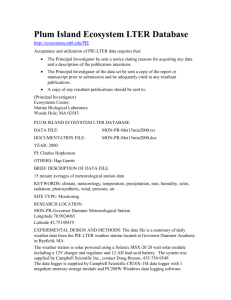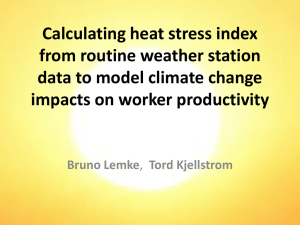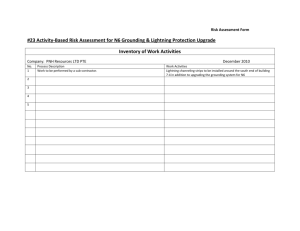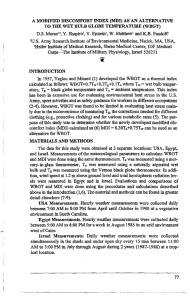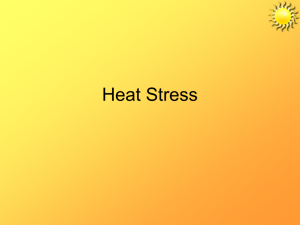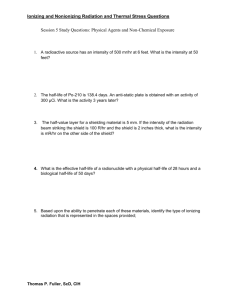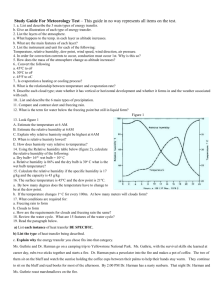An Introduction to Heat Stress
advertisement
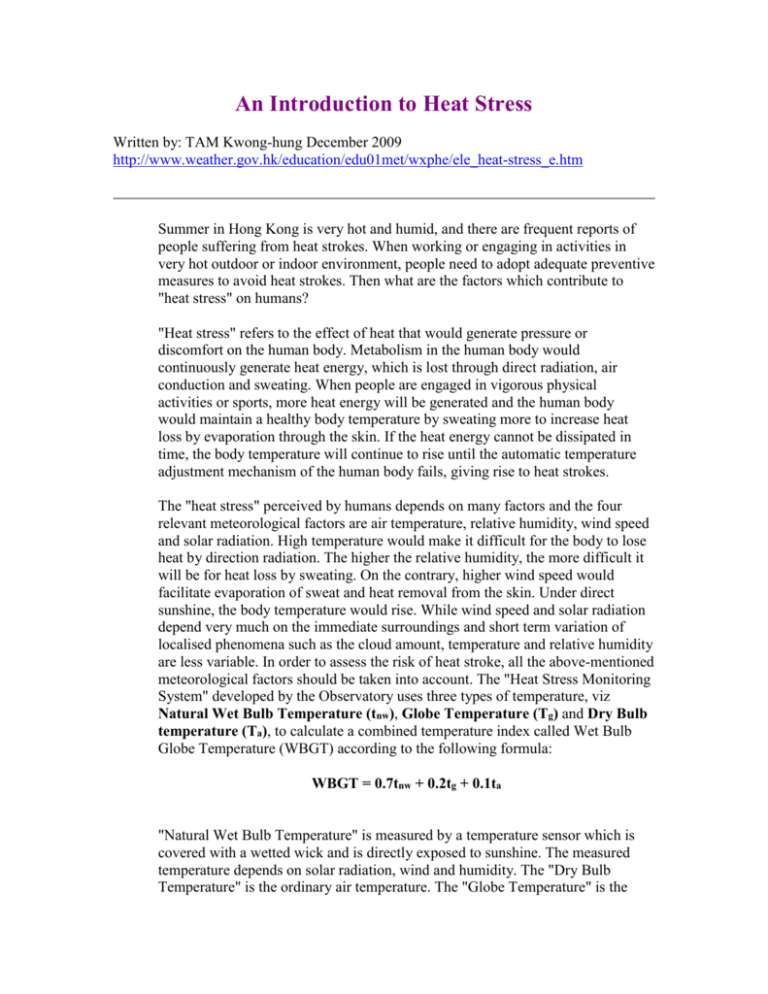
An Introduction to Heat Stress Written by: TAM Kwong-hung December 2009 http://www.weather.gov.hk/education/edu01met/wxphe/ele_heat-stress_e.htm Summer in Hong Kong is very hot and humid, and there are frequent reports of people suffering from heat strokes. When working or engaging in activities in very hot outdoor or indoor environment, people need to adopt adequate preventive measures to avoid heat strokes. Then what are the factors which contribute to "heat stress" on humans? "Heat stress" refers to the effect of heat that would generate pressure or discomfort on the human body. Metabolism in the human body would continuously generate heat energy, which is lost through direct radiation, air conduction and sweating. When people are engaged in vigorous physical activities or sports, more heat energy will be generated and the human body would maintain a healthy body temperature by sweating more to increase heat loss by evaporation through the skin. If the heat energy cannot be dissipated in time, the body temperature will continue to rise until the automatic temperature adjustment mechanism of the human body fails, giving rise to heat strokes. The "heat stress" perceived by humans depends on many factors and the four relevant meteorological factors are air temperature, relative humidity, wind speed and solar radiation. High temperature would make it difficult for the body to lose heat by direction radiation. The higher the relative humidity, the more difficult it will be for heat loss by sweating. On the contrary, higher wind speed would facilitate evaporation of sweat and heat removal from the skin. Under direct sunshine, the body temperature would rise. While wind speed and solar radiation depend very much on the immediate surroundings and short term variation of localised phenomena such as the cloud amount, temperature and relative humidity are less variable. In order to assess the risk of heat stroke, all the above-mentioned meteorological factors should be taken into account. The "Heat Stress Monitoring System" developed by the Observatory uses three types of temperature, viz Natural Wet Bulb Temperature (tnw), Globe Temperature (Tg) and Dry Bulb temperature (Ta), to calculate a combined temperature index called Wet Bulb Globe Temperature (WBGT) according to the following formula: WBGT = 0.7tnw + 0.2tg + 0.1ta "Natural Wet Bulb Temperature" is measured by a temperature sensor which is covered with a wetted wick and is directly exposed to sunshine. The measured temperature depends on solar radiation, wind and humidity. The "Dry Bulb Temperature" is the ordinary air temperature. The "Globe Temperature" is the temperature measured by a temperature sensor installed inside a black, thin hollow globe made of copper. It measures the combined effects of solar radiation and wind. The occupational safety and health organizations from many countries have already established WBGT thresholds for reference by people working or carrying out outdoor activities in a hot environment. In general, appropriate preventive measures should be taken when WBGT reaches 28oC. When WBGT reaches 31oC or more, it will cause more serious health effect.

